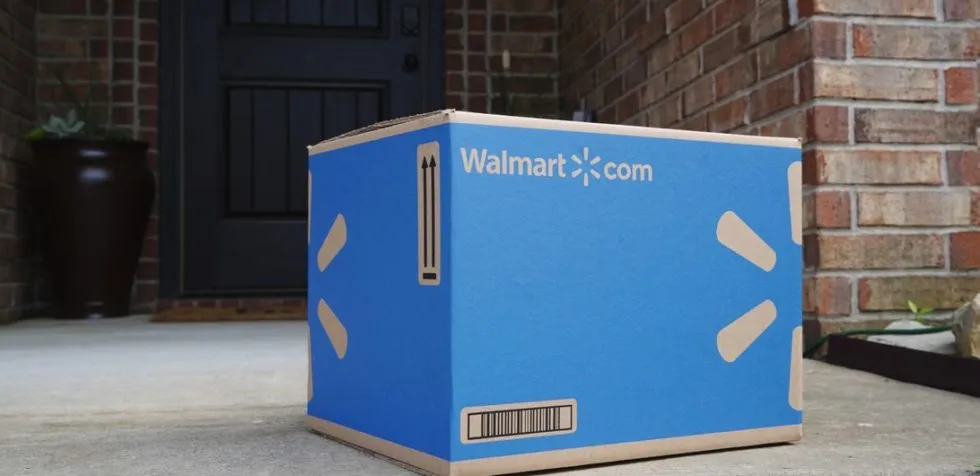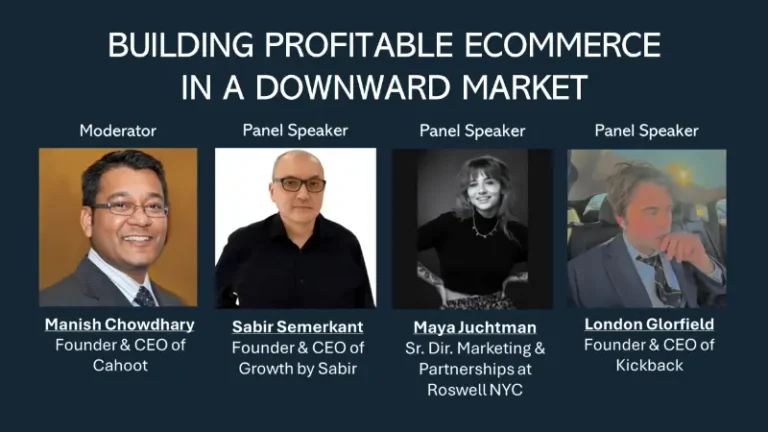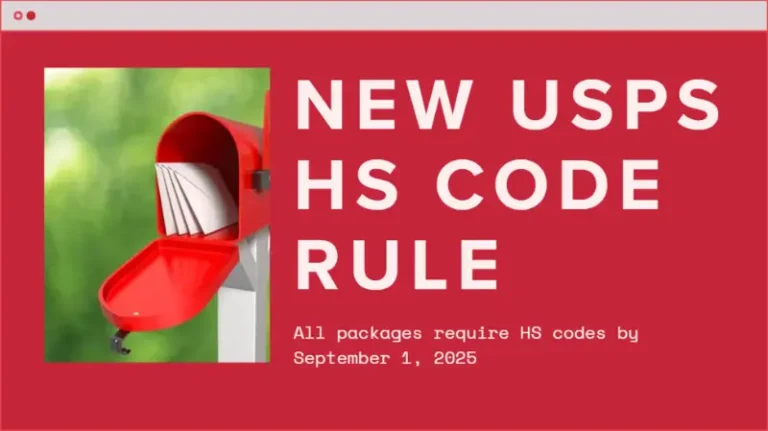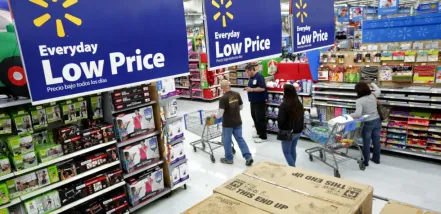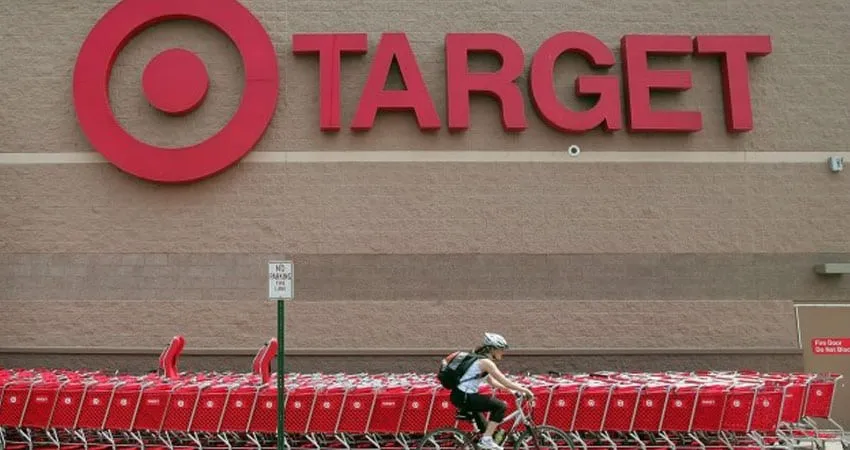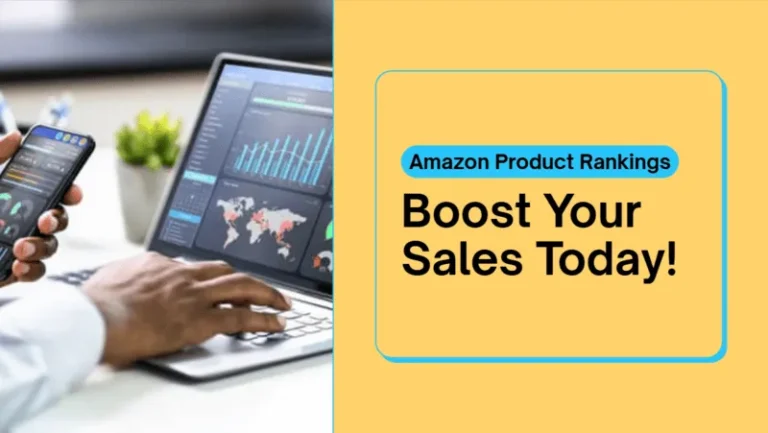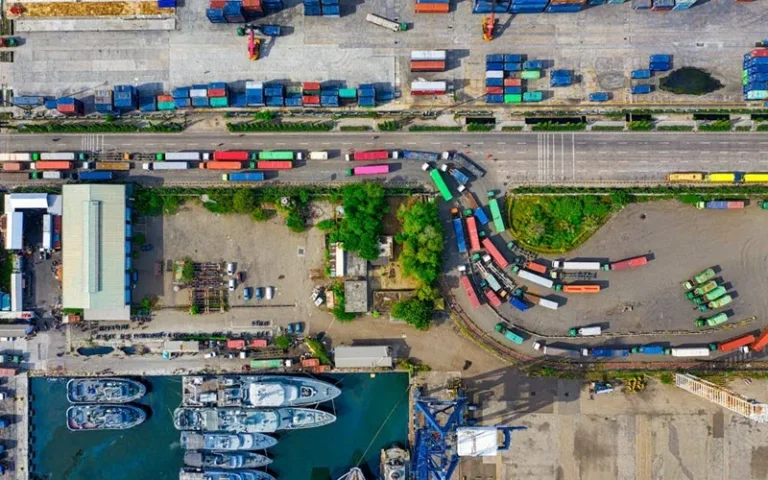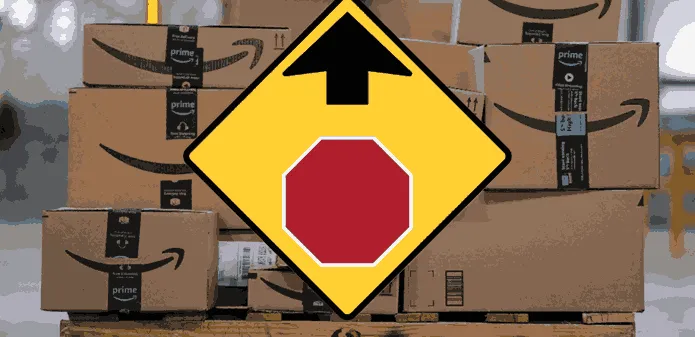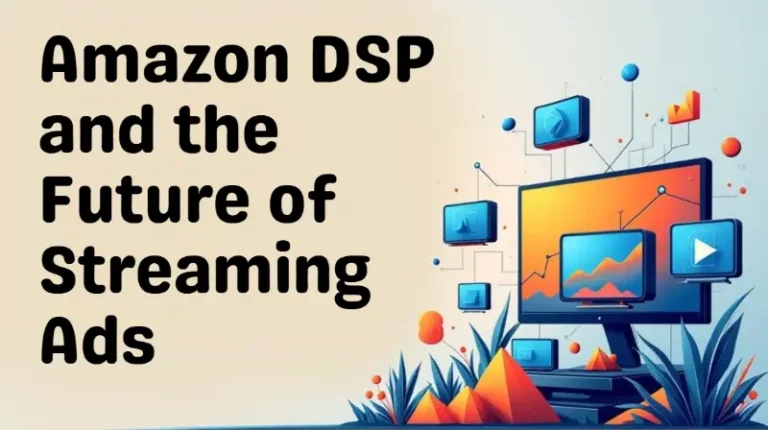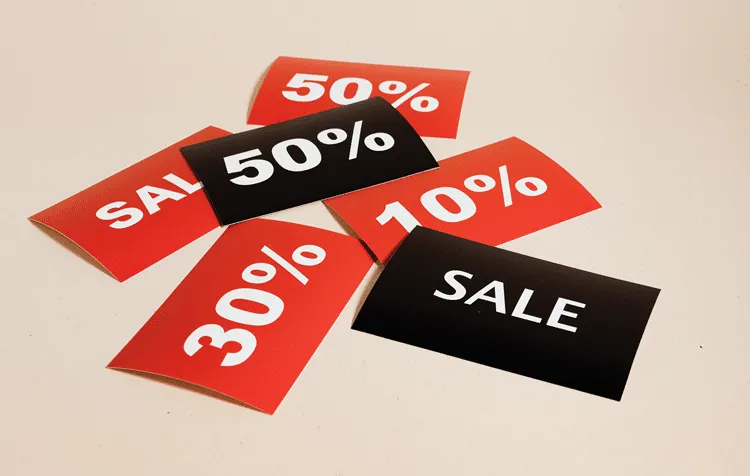Walmart to Offer Next-Day Delivery Without a Membership Fee
In this article
Marc Lore, president and CEO of Walmart eCommerce, announced that Walmart will begin rolling out next-day delivery for more than 220,000 items on its website, including pet food, diapers, paper towels and laundry detergent, this week.
The nation’s largest retailer said Tuesday it’s been building a network of more efficient e-commerce distribution centers to make that happen.
Customers must spend at least $35 to be eligible for next-day delivery. “NextDay” delivery will be available first to Walmart.com customers in Phoenix and Las Vegas, Lore said, and will expand to Southern California later this month.
NextDay delivery is a being positioned as a complement to Walmart’s same-day Grocery Pickup and Delivery options, and free two-day shipping on millions of items. The program figures to boost Walmart’s e-commerce sales.

Turn Returns Into New Revenue

Walmart to expand shipping perks for shoppers ahead of the holidays
In this article
In the fight for shoppers’ holiday dollars, retailers are increasingly touting perks like free shipping and easy returns.
Walmart said Tuesday it is expanding two-day shipping and in-store returns to many items sold by third parties on its website next month, just ahead of the busy holiday shopping season.
The move comes as rivals Amazon and Target have been improving their own shipping perks to persuade shoppers to pick them over the competition. When it gets down to the last minute, shoppers who procrastinate later this year will be flocking to the retailers that can get items to them fastest before Christmas.

Turn Returns Into New Revenue

Target Rolls Out Free 2-Day Delivery Ahead of the Holidays
In this article
The big-box brand with the bullseye dog are at it again, putting a target on competitors’ backs.
In the never-ending pursuit of Amazon and seeking separation from other foes like Walmart, Target has announced the availability of same-day delivery in 46 states ahead of the peak holiday season from Thanksgiving through Christmas. The company is also offering free two-day shipping plus curbside pickup on hundreds of thousands of items with no purchase threshold, from Nov. 1 to Dec 22.
Frank Poore, CEO of ecommerce software firm CommerceHub, said the continual push toward “free” and “fast” by the big three just raise the pressure on the rest of the field to keep up, citing Walmart’s non-subscription-based program and incentives for store pickup, in addition to Target.

Turn Returns Into New Revenue

Deloitte Study: Holiday Shoppers Hooked on Fast and Free Shipping
In this article
According to Deloitte’s 33rd annual “Holiday Survey” of consumer spending intentions and trends, for the second consecutive year, 88 percent of survey respondents prefer free shipping over receiving their holiday packages faster (12 percent).
The majority (61 percent) of holiday shoppers report they will buy items that qualify for free shipping this season. For free shipping, two-thirds (66 percent) are willing to wait 3-7 days for their merchandise. More than 3 in 5 people surveyed (62 percent) define “fast shipping” as two days or less, up from 54 percent in 2017. One-quarter (25 percent) define three to four day delivery as fast shipping, down from 35 percent in 2017. Among the reasons for shopping in stores, 47 percent of respondents said it was to “avoid shipping costs.” Their No 1. reason to shop online is “convenience” (77 percent) followed by “free shipping” (72 percent).

Turn Returns Into New Revenue

What Target’s Free 2-Day Shipping Means For Other Retailers
In this article
Target’s free shipping perk creates additional pressure on everyone to race to the common denominator — which is fast, free shipping.
It’s clearly a conversion driver for retailers and sets the longer term implication that fast, free shipping is going to be expected as the standard at all times and on all items. It’s surely becoming the norm and retailers have to be extremely efficient in order to be successful because of the high cost of shipping. All signs indicate this will be competitive holiday season.

Turn Returns Into New Revenue

Amazon FBA Q4 2021 Inventory Limits Put Merchant’s Earnings in Jeopardy
Amazon FBA sellers have unfortunately got used to steadily declining inventory limits due to Amazon’s inability to keep up with demand. Read on to learn more about changes to FBA inventory this holiday season, what you should do to maximize your limits, and how you can de-risk your holiday season with Amazon FBM.
What are the new limits?
Amazon FBA sellers were already hit with 20-65% drops in their inventory storage limits in April 2021 when Amazon changed from ASIN-level quantity limits to storage-type quantity limits – and they’re now sweating even lower limits as the holidays approach.

Amazon doesn’t publicize exactly how they calculate sellers’ limits, but sellers have been dismayed in recent weeks to see their restock numbers drop. FBA seller groups are lighting up with merchants whose holidays are all of a sudden in jeopardy – this comment on Telegram is emblematic of the challenge, “Hi, any advice on how to deal with Amazon decreasing restock limits to a third of what it was?”. The responses are befuddled: “Your IPI seems good”. What’s a seller to do?
On top of that, Amazon suddenly changed their Christmas receiving deadline from December 11th to December 2nd. The comments on the announcement, made October 8th, reveal a common theme.
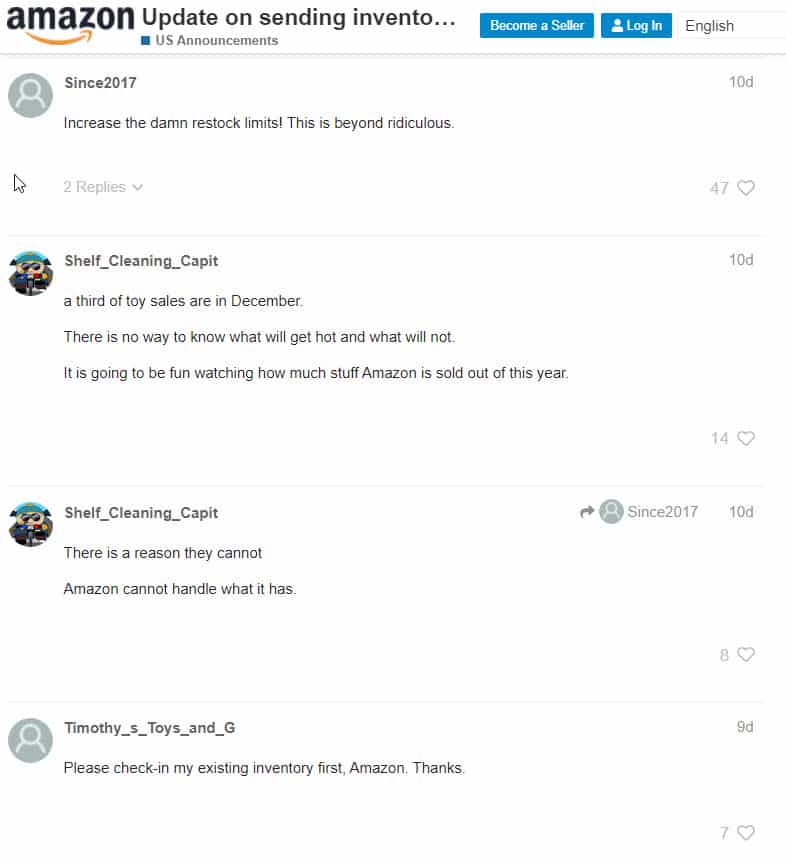
Frustrated sellers plead with Amazon to increase restock limits, but help isn’t coming. Amazon FBA’s history is instructive: over and over, they’ve made it harder to get inventory into FBA, not easier. This holiday receiving deadline is just one more seller-unfriendly change in a long history of negative changes.
How can merchants maximize their Amazon FBA IPI score?
If a seller is determined to only use Amazon FBA, then they need to maximize their IPI score to increase their inventory limits. The FBA Inventory Performance Index (as it’s known formally) measures how efficiently and productively Amazon sellers are managing their inventory. Our Amazon IPI deep dive tells you everything you need to know, but we’ve also included the critical information here.
IPI score is based on four factors:
- Excess inventory
- Sell-through rates
- Stranded inventory
- In-stock inventory
Slash Your Fulfillment Costs by Up to 30%
Cut shipping expenses by 30% and boost profit with Cahoot's AI-optimized fulfillment services and modern tech —no overheads and no humans required!
I'm Interested in Saving Time and MoneyTo be fair, reducing excess inventory isn’t the challenge on most sellers’ minds these days. Still, keep an eye on whether particular SKUs aren’t selling well and thus have months worth of product backed up in Amazon’s warehouses. Those are good candidates for removal or disposal orders, which immediately improve IPI score. When it comes to FBA inventory, the 80/20 rule is a bit different from normal: if just 20% of your SKUs are slow movers, they can still torpedo your overall score. You can’t get away with 80% effectiveness – you need 100%.
Next, look to maximize your sell-through rates to improve your IPI score and thus your inventory limits. It’s simple: sell-through rate is equal to the Total Sales of each ASIN divided by the Average Inventory Level of each ASIN for the last 90 days. Of course, every seller wants to improve their sell-through rate; this means lots of sales! The challenge, though, is that an improvement in sell-through rate means faster and faster replenishment orders. Sellers need to be ready to send replenishments as often as three or more times a week if they want to maximize sell-through rate.

Stranded inventory hurts IPI score and is bad for business. Occasionally inventory in FBA gets inadvertently listed as FBM and thus gets stranded. Sometimes it’s a situation where the listing itself has been closed. It is also possible that pricing triggers an alert, and Amazon shuts down the listing to prevent it from selling outside of the minimum or maximum selling price set by the merchant. Keep a close eye on your seller tools and fix any issues with stranded inventory ASAP.
Finally, avoid FBA stockouts at all costs. This is an immense challenge in Q4, as sellers who have been increasing their sell-through rates become more and more vulnerable to a surge in demand (say, from the holidays). The surge can easily knock a SKU out of stock, which triggers a death spiral of lost search rank, lower IPI score, and lower inventory limits. There’s only one reliable way to avoid stockouts – duplicate Amazon FBM listings. With a duplicate FBM listing powered by the merchant or an FBA alternative, sellers can rest easy knowing that if there’s a run on their Amazon FBA stock, they can turn on their FBM listing and keep selling without risking their business.
Looking for a New 3PL? Start with this Free RFP Template
Cut weeks off your selection process. Avoid pitfalls. Get the only 3PL RFP checklist built for ecommerce brands, absolutely free.
Get My Free 3PL RFPHow to use Amazon FBM to grow this holiday season
Amazon FBM isn’t just a good tool to grow on Amazon – it’s also the key that will unlock multichannel ecommerce sales. As we explained in the last section, Amazon FBM is a seller’s best way to avoid FBA stockouts and protect their Amazon business. On top of that, though, an excellent FBM approach will enable sellers to profitably grow on other marketplaces and on their own site. A recent Shopify study found that sellers on 3+ ecommerce channels boost their revenue by 200% – but Amazon Multi-channel Fulfillment (MCF) isn’t the answer to shipping for other channels.
First and foremost, fulfilling Amazon orders yourself or with an FBA alternative protects your holiday sales. The challenge for sellers trying to do it themselves is that unless they already have 4+ warehouses strategically placed around the United States, they either have to sacrifice fast shipping or free shipping. Offering 2-day shipping to the entire US from just one location puts the majority of customers in Zones 4 and up, which racks up incredible express rates – likely completely erasing margin. On the other hand, delivery times of 5-7 business days will lose customers left and right in the checkout stage, if they even get there. That’s why most sellers turn to an eCommerce order fulfillment platform to power their FBM.
The right eCommerce fulfillment provider won’t just ship your Amazon orders. The best have built easy integrations with all major marketplaces and shopping carts, so with next to no additional effort, sellers have a single operations solution to all of their sales channels. An effective multi-channel fulfillment and sales strategy will include a partner that powers affordable fast & free shipping. Customers expect fast & free shipping online, full stop. Sellers that meet that need see more impressions, higher conversion, and higher retention, so those that offer it on major marketplaces as well as their own site stand to gain the most.

Turn Returns Into New Revenue

New Amazon FBA Holiday Order Fulfillment Fee Squeezes Seller Margins
It has been a difficult year filled with price increases for Amazon sellers that rely on Fulfillment by Amazon (FBA), and it’s about to get even more difficult.
On August 16th, Amazon announced that for the first time ever, they will implement a Holiday Peak Order Fulfillment Fee to take effect from October 15th, 2022 to January 14th, 2023. Per Amazon, the fee will be an average of USD 0.35 per item sold using US and Canada FBA. Even in isolation, a 35 cent increase in fulfillment fees can be difficult for sellers to absorb. Considering the enormous pressure that inflation is already putting on sellers and other FBA price increases, this could be the straw that breaks the camel’s back.
How has Amazon ratcheted up the price pressure on FBA sellers this year, and what can sellers do to fight back and protect their margins?
Amazon FBA Price Increases in 2022
Amazon has raised prices across the board for FBA sellers multiple times in 2022. How do they add up?
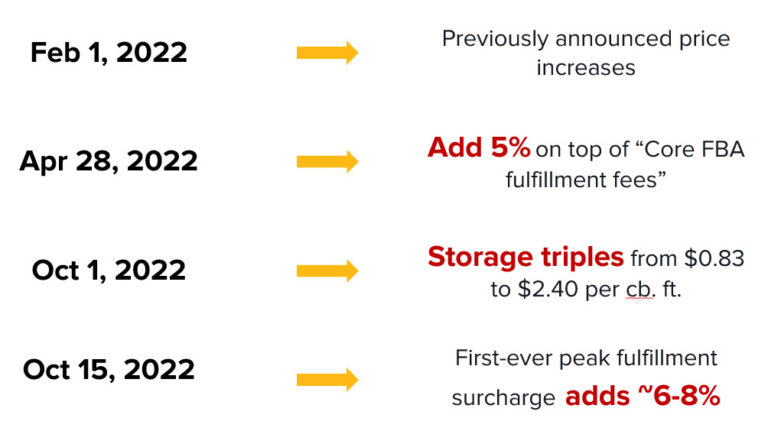
Source: Amazon Seller Central, Cahoot analysis
Annual Amazon FBA Fee Increase
It started with annual FBA fee increases that kicked in on February 1st. Order fulfillment fees increased from 2% on the low end to as much as 12% on the high end. Sellers with items in the Small Standard categories saw increases of 8%, or $0.22 to $0.27. For small products selling under $20 or even $10, this immediately shaved off a few points of margin.
On top of that, FBA Storage Fees increased by $0.08 per cubic foot, or 10.6%. Again, this increase can shave off a point or two of margin, making enduring profitability that much more difficult.
Finally, Amazon increased Removal and Disposal Fees by over 100% for many items. For instance, a SKU between 1-2 lbs will increase from $0.35 to $0.75. Sellers don’t usually plan on having to pay for removal, but nevertheless some products will fail to sell and need to be liquidated – especially in the cutthroat environment of Amazon’s 3P marketplace. This change raises the overall cost of doing fulfillment business.
Slash Your Fulfillment Costs by Up to 30%
Cut shipping expenses by 30% and boost profit with Cahoot's AI-optimized fulfillment services and modern tech —no overheads and no humans required!
I'm Interested in Saving Time and MoneyAmazon Fuel and Inflation Surcharge
Just two months later, Amazon added a 5% “fuel and inflation surcharge” on top of the previously announced price increases. This kind of surcharge was a first for Amazon, and like the previous changes it adds another ~20 to 50 cents in cost to most items. Taken together with the Q1 increases, by this point FBA had already added a dollar or more to total fulfillment costs for many items.
Amazon Holiday Peak Order Fulfillment Fee
The new fee in question, the Holiday Peak Order Fulfillment Fee, will be applied on top of both of the February price increases and the Fuel and Inflation Surcharge. It will be in effect from October 15th of this year to January 14th in 2023, so for the entirety of peak.
At an average of another 35 cents on top of the other increases, there are few, if any, items that haven’t shot up over a dollar in cost to fulfill through FBA this year. When you consider that many smaller items only cost $3 or $4 to fulfill through FBA, that’s a staggering 25%+ increase in one of the most important operational costs in one year. Sellers with small, $10 items have now likely seen over 10% more of their revenue disappear in FBA fees in just over half a year. That, unfortunately, is fatal to most sellers.
The Top Amazon FBA Alternative: Cahoot FBM
Cahoot has created an Amazon-like ecommerce order fulfillment services network that makes low cost, fast and free shipping a breeze for every eCommerce sales channel – including Amazon FBM.
Cahoot is the next generation of tech-enabled order fulfillment networks. Unlike other networks that are collections of third party logistics warehouses (3PLs), Cahoot’s innovative approach empowers merchants across the country to fulfill orders for one another. Our peer-to-peer network is a collective of highly vetted eCommerce retailers who offer up excess warehouse space and resources to provide high-quality order fulfillment to other merchants. Since they fulfill their own DTC orders, they know how important top-notch fulfillment is, and they put the same care and energy into your orders as they do for their own.
Because Cahoot is leveraging excess capacity in merchant-owned warehouses, we’re less pressured by rising warehouse and labor costs than Amazon is. As a result, costs are typically lower than what you get with a traditional 3PL fulfillment company. With a P2P network, multi-channel fulfillment with nationwide 1-day and 2-day delivery at economy shipping rates is the norm.
Still unconvinced? Here’s a deep dive into how you can make the choice between Amazon FBM vs FBA – or decide to use a mixed strategy.

Turn Returns Into New Revenue

Major Carrier Peak Shipping Surcharges – 2023
In this article
 9 minutes
9 minutes
- Amazon FBA Peak Surcharges 2022
- USPS Peak Surcharges 2022
- Priority Mail and Priority Mail Express Rate Adjustments:
- First-Class Package Service, Parcel Select Ground, and USPS Retail Ground:
- FedEx Peak Surcharges 2022
- UPS Peak Surcharges 2022
- Reduce Shipping Costs with Cahoot Distributed Order Fulfillment
While each of Amazon, USPS, FedEx, and UPS are implementing peak surcharges for parcel delivery this holiday season, they’re all going about it in different ways.
Amazon, relatively new to the surcharge game, has added flat percentage fee increases to key services throughout the year. For peak, though, they have a sliding scale that will predictably hit bigger packages with bigger cost increases. Their peak surcharge will be added on top of the existing fuel and inflation surcharge they put into effect this summer, further squeezing seller margins.
Similar to Amazon, USPS will be using a sliding scale that increases the surcharge based on the parcel’s weight and zone. Flat Rate Boxes and Envelopes will see big jumps of $0.75 to $0.95, which will pinch the sellers that rely on these shipping options to keep their logistics costs down while selling inexpensive items.
FedEx, on the other hand, has more flat fees to add as surcharges, including a $2.50 per Ground Economy package charge during Black Friday and Cyber Monday. On top of that, they’ve introduced a “peaking factor” calculation to apply to their largest shippers. The more large shippers outstrip their summer volumes during peak, the more they’ll pay per package.
Like FedEx, UPS will use a dynamic pricing scale that will charge large shippers more when they far outstrip their summer volumes. Unlike FedEx (and the others), though, UPS won’t add a flat surcharge to all packages.
Let’s get into the details.
Amazon FBA Peak Surcharges 2022
On August 16th, Amazon announced that for the first time ever, they will implement a Holiday Peak Fulfillment Fee to take effect from October 15th, 2022 to January 14th, 2023. Per Amazon, The fee will be an average of USD $0.35 per item sold using US and Canada FBA.” Even in isolation, a 35 cent increase in order fulfillment fees can be difficult for sellers to absorb. Considering the enormous pressure that inflation is already putting on sellers and other FBA price increases, this could be the straw that breaks the camel’s back.
At an average of another 35 cents on top of the other increases, there are few, if any, items that haven’t shot up over a dollar in cost to fulfill through FBA this year. When you consider that many smaller items only cost $3 or $4 to fulfill through FBA, that’s a staggering 25%+ increase in one of the most important operational costs in one year. Sellers with small, $10 items have now likely seen over 10% more of their revenue disappear in FBA fees in just over half a year.
To add to FBA seller woes, storage costs for FBA will nearly triple from $0.83 to $2.40 per cb. ft. While this has long been Amazon’s policy and thus is expected, it doesn’t hurt margins any less.
Slash Your Fulfillment Costs by Up to 30%
Cut shipping expenses by 30% and boost profit with Cahoot's AI-optimized fulfillment services and modern tech —no overheads and no humans required!
I'm Interested in Saving Time and MoneyUSPS Peak Surcharges 2022
USPS announced their rate adjustments for the 2022 peak holiday season on August 10th, covering both commercial and retail parcels in most classes: Priority Mail Express, Priority Mail, First-Class Package Service, Parcel Select, and USPS Retail Ground. The surcharges are set to go into effect on October 2nd, 2022, and to last until January 22nd, 2023.
There are some notably large increases in prices among the surcharges – for instance, Commercial Priority Mail and Priority Mail Express Flat Rate Boxes and Envelopes will rise by $0.75 each, while their Retail counterparts will increase by $0.95 each. Here’s a full list of increases for their most popular services:
Priority Mail and Priority Mail Express Rate Adjustments:
- Commercial:
- $0.75 increase for PM and PME Flat Rate Boxes and Envelopes.
- $0.25 increase for Zones 1-4, 0-10 lbs.
- $0.80 increase for Zones 5-9, 0-10 lbs.
- $0.75 increase for Zones 1-4, 11-25 lbs.
- $2.80 increase for Zones 5-9, 11-25 lbs.
- $3.00 increase for Zones 1-4, 26-70 lbs.
- $6.50 increase for Zones 5-9, 26-70 lbs.
- Retail:
- $0.95 increase for PM and PME Flat Rate Boxes and Envelopes.
- $0.30 increase for Zones 1-4, 0-10 lbs.
- $1.00 increase for Zones 5-9, 0-10 lbs.
- $0.95 increase for Zones 1-4, 11-25 lbs.
- $3.20 increase for Zones 5-9, 11-25 lbs.
- $3.25 increase for Zones 1-4, 26-70 lbs.
- $6.45 increase for Zones 5-9, 26-70 lbs.
First-Class Package Service, Parcel Select Ground, and USPS Retail Ground:
- Commercial:
- $0.25 increase for Zones 1-4, 0-10 lbs.
- $0.40 increase for Zones 5-9, 0-10 lbs.
- $0.75 increase for Zones 1-4, 11-25 lbs.
- $1.60 increase for Zones 5-9, 11-25 lbs.
- $3.00 increase for Zones 1-4, 26-70 lbs.
- $5.50 increase for Zones 5-9, 26-70 lbs.
- Retail:
- $0.30 increase for Zones 1-4, 0-10 lbs.
- $0.60 increase for Zones 5-9, 0-10 lbs.
- $0.95 increase for Zones 1-4, 11-25 lbs.
- $2.70 increase for Zones 5-9, 11-25 lbs.
- $3.25 increase for Zones 1-4, 26-70 lbs.
- $5.85 increase for Zones 5-9, 26-70 lbs.
Looking for a New 3PL? Start with this Free RFP Template
Cut weeks off your selection process. Avoid pitfalls. Get the only 3PL RFP checklist built for ecommerce brands, absolutely free.
Get My Free 3PL RFPFedEx Peak Surcharges 2022
Unlike USPS, FedEx’s peak surcharges will kick in much earlier, in September. They are taking a much more granular approach to surcharges and fees that split out many different ways in which they’ll increase cost, and those cost increases will vary based on the particular date in peak. Not only will they vary by the particular date, but they’ll also vary by a new “peaking factor” that FedEx will use to dynamically charge more to the sellers that have the biggest spikes in sales. The better you do, the worse your margin will become.

Source: FedEx.com
FedEx’s basic surcharges will start with an additional $1.50 per package for Ground Economy services, in effect during November and from mid-December to mid-January. During the most busy time of Black Friday and Cyber Monday, that surcharge will jump up to an even higher $2.50 per package.
The “peaking factor” charge will be added on top of that, and it will be in effect from October 31st to January 15th. Thankfully for SMBs, it will only apply to enterprise customers that ship more than 20,000 Ground Economy packages per week, but it’s important to keep an eye on for the future regardless. What starts as a limited surcharge often spreads to apply to more people in subsequent years. The peaking factor will be calculated based on the ratio of volume shipped during peak as compared to an average to volume shipped during the relatively sleepy summer weeks of June 6th, 2022 – July 3rd, 2022. A seller that doubles their volume during peak will pay an extra $2.50 per Ground package and an extra $3.50 per Express on top of the previously mentioned surcharges. Quadruple your volume, and you’ll pay an extra $6.00 for Ground and $7.00 for Express, eating heavily into your margin.
UPS Peak Surcharges 2022
Finally, UPS shared their plans for peak surcharges in their September 9th update. Compared to USPS and FedEx, their surcharges are limited in scope and will affect fewer sellers. They have a range of surcharges that cover most international shipments, while their domestic surcharges will operate largely in the same way that FedEx’s “peaking factor” will work.
It will only apply to sellers that have been billed for more than 20,000 packages during any week since October 2021, and the surcharge will vary based on the type of service and the extent to which the seller’s peak volume outstrips their “Baseline Volume”. The baseline volume will be calculated as the customer’s average weekly volume for June 2022.

Source: UPS
UPS’s surcharges come out at a very similar level to FedEx’s peaking surcharges – for instance, a seller that doubles their baseline volume and uses UPS Ground Residential will pay $2.50 more per package, while Next Day Air Residential will cost $3.50 extra per package. Those numbers are identical to those of FedEx, as are many of the other surcharges.
UPS’s international surcharges will add cost in a linear fashion based on package weight. For instance, international shipments from the US to Europe will cost $0.15 per lb more via UPS Worldwide Express Plus. Most of their international surcharges are going into effect on September 25th, and notably, they haven’t provided an end date to the rate increases.
Scale Faster with the World’s First Peer-to-Peer Fulfillment Network
Tap into a nationwide network of high-performance partner warehouses — expand capacity, cut shipping costs, and reach customers 1–2 days faster.
Explore Fulfillment NetworkReduce Shipping Costs with Cahoot Distributed Order Fulfillment
Cahoot has created an Amazon-like ecommerce order fulfillment network that makes low cost, fast and free shipping a breeze for every eCommerce sales channel. We use our large number of warehouses to strategically stage merchant inventory in multiple locations close to their customers, which minimizes their Zone profile. This both saves on shipping costs and time, which expands margin for the sellers and delights customers with short delivery times.
Cahoot is the next generation of tech-enabled order fulfillment services networks. Unlike other networks that are collections of third party logistics warehouses, Cahoot’s innovative approach empowers merchants across the country to fulfill orders for one another. Our peer-to-peer network is a collective of highly vetted eCommerce retailers who offer up excess warehouse space and resources to provide high-quality order fulfillment to other merchants. Since they fulfill their own DTC orders, they know how important top-notch order fulfillment is, and they put the same care and energy into your orders as they do for their own.
With a peer-to-peer network, multi-channel fulfillment with nationwide 1-day and 2-day delivery at economy shipping rates is the norm.

Turn Returns Into New Revenue

Amazon Announces Q4 Deal Submission Deadlines
In this article
 2 minutes
2 minutes
As sellers and Amazon arrive at the conclusion of Prime Day 2023, all eyes have shifted to the fall and Q4 holiday shopping season that lies ahead. The online retailer wants sellers to start planning, and it has already announced the Lightning Deal submission deadlines for the rest of its major 2023 deal events – the Fall Prime Deal Event and Black Friday / Cyber Monday.
What Events / Weeks do These Include?
The company has announced Lightning Deal Submission deadlines for 2 events:
- Fall Prime Deal Event (known informally as the 2nd Prime Day)
Amazon announced this event, available exclusively to its Prime members for the first time in October 2022. While many speculate the company introduced it to force another wave of shopping from its customers in the lull between Prime Day and Q4, it is still a great opportunity for sellers to capitalize on.
- Black Friday / Cyber Monday week
Amazon, like every other retailer, aims to capitalize on the surge in sales during this festive time of the year, as the holidays approach.
When do I Need to Get my Deals in?
- For the Fall Prime Deal Event, you must get your Lightning Deals in by August 11, 2023.
- For Black Friday / Cyber Monday, you must get your deals in by September 1, 2023
Note: Amazon has only announced deadlines for Lightning Deals so far. You can also submit Coupons and Prime Exclusive Discounts for these events. The company will announce the deadline for these later.

Turn Returns Into New Revenue


